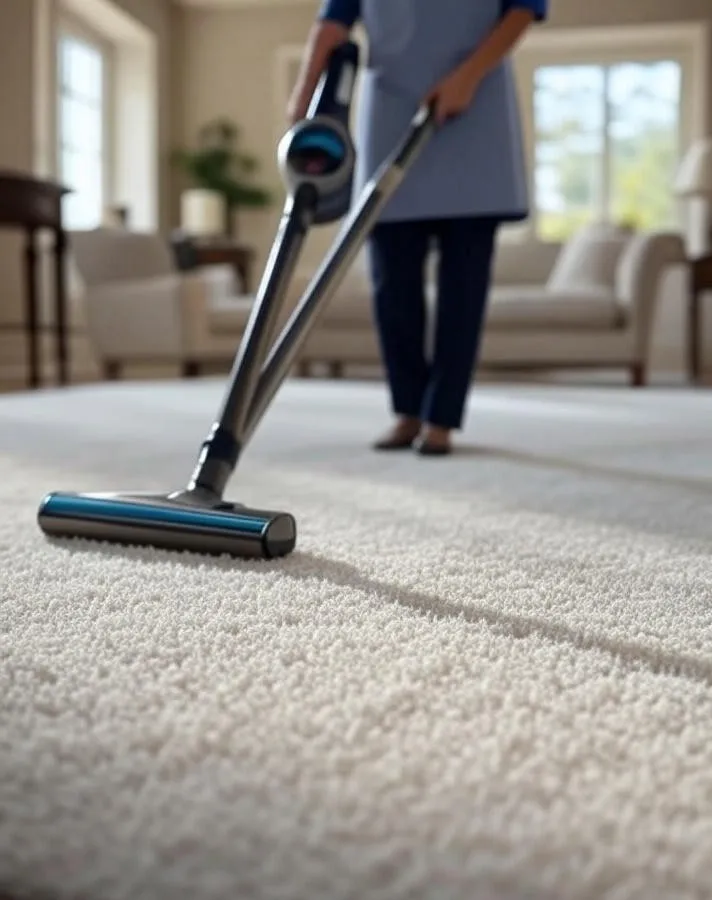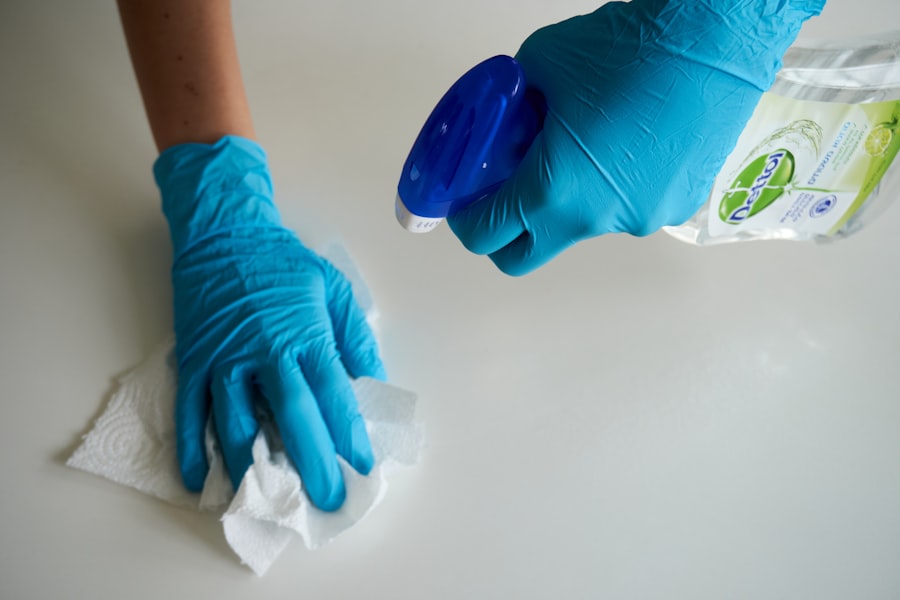When it comes to cleaning, one of the most common mistakes people make is not reading labels. Many individuals grab a bottle of cleaner without taking the time to understand what it contains or how to use it effectively. This oversight can lead to ineffective cleaning or, worse, damage to surfaces and health risks. Cleaning products often come with specific instructions and warnings that are crucial for safe and effective use.
By neglecting to read these labels, you may inadvertently mix incompatible products or apply them incorrectly, leading to subpar results.
Moreover, understanding the ingredients in your cleaning products can help you make informed choices. For instance, some cleaners contain harsh chemicals that can be harmful to your health or the environment. By reading labels, you can opt for eco-friendly alternatives or products that are safe for your family and pets.
As an industry leader in cleaning solutions, we emphasize the importance of being informed consumers. Taking a moment to read labels can save you time, money, and potential health issues in the long run.
Key Takeaways
- Not reading labels can lead to using products inappropriately and causing harm to yourself or surfaces.
- Using too much cleaner can leave behind residue and potentially damage surfaces.
- Ignoring ventilation while cleaning can lead to inhaling harmful fumes and chemicals.
- Mixing cleaning products can create toxic fumes and pose serious health risks.
- Not using the right tools can make cleaning less effective and more difficult.
- Overlooking high-touch areas can lead to the spread of germs and bacteria.
- Skipping regular maintenance can lead to the buildup of dirt and grime, making cleaning more difficult in the long run.
- Not following instructions on cleaning products can lead to ineffective cleaning and potential damage to surfaces.
Using Too Much Cleaner
The Consequences of Excessive Cleaning
Furthermore, excessive use of cleaning products can be wasteful and costly. You’ll find yourself replenishing your supplies more frequently than necessary, which can be a significant expense.
Finding the Right Balance
Using the right amount of cleaner is crucial for effective cleaning and a healthier environment. Many cleaning products are designed to work effectively with just a small amount. By following the recommended usage instructions, you can achieve sparkling results without the negative side effects of over-application.
Smart Cleaning Practices
As experts in the cleaning industry, we advocate for smart cleaning practices that maximize efficiency while minimizing waste. By using the right amount of cleaner, you can ensure a cleaner and healthier environment while also reducing waste and saving money.
Ignoring Ventilation

Ignoring ventilation is another critical mistake that many make during their cleaning routines. When using chemical cleaners, it’s essential to ensure that your space is well-ventilated. Poor ventilation can lead to the accumulation of harmful fumes, which can cause respiratory issues and other health problems. Opening windows or using fans can help circulate fresh air and reduce the concentration of airborne chemicals.
Creating a safe cleaning environment is paramount for both your health and the longevity of your home. Proper ventilation not only protects you from harmful fumes but also helps your cleaning products work more effectively. When surfaces are dry and well-aired, they are more receptive to cleaning solutions. As leaders in the cleaning industry, we stress the importance of safety first—always prioritize ventilation when tackling your cleaning tasks.
Mixing Cleaning Products
| Product | Effect | Risk |
|---|---|---|
| Bleach | Disinfects and whitens | Can produce toxic fumes when mixed with ammonia |
| Ammonia | Cleans glass and mirrors | Can produce toxic fumes when mixed with bleach |
| Vinegar | Removes odors and disinfects | Safe to mix with most cleaning products |
Mixing cleaning products is a dangerous practice that many people unknowingly engage in. While it may seem like a good idea to combine different cleaners for enhanced effectiveness, this can lead to toxic reactions.
For example, mixing bleach with ammonia creates toxic chloramine vapors that can cause serious respiratory issues.
It’s crucial to understand that not all cleaning products are compatible with one another.
To stay safe while cleaning, always use one product at a time and follow the manufacturer’s guidelines. If you’re unsure about whether two products can be mixed, it’s best to err on the side of caution and avoid combining them altogether. As an authority in the cleaning industry, we encourage our readers to prioritize safety by sticking to single-product applications and ensuring proper usage.
Not Using the Right Tools
Not using the right tools can significantly hinder your cleaning efforts. Many people rely on old rags or sponges that may not be effective for specific tasks. Using the appropriate tools—such as microfiber cloths, scrub brushes, or specialized mops—can make a world of difference in achieving a thorough clean. Each tool is designed for particular surfaces and types of dirt, so investing in quality cleaning tools is essential.
Maximizing your cleaning efficiency starts with having the right tools at your disposal. For instance, using a vacuum cleaner with HEPA filters can help remove allergens from carpets and upholstery more effectively than traditional methods. As industry leaders, we recommend assessing your cleaning arsenal regularly and upgrading tools as needed to ensure optimal performance.
Overlooking High-Touch Areas

Overlooking high-touch areas is a common oversight that can lead to the spread of germs. Surfaces like doorknobs, light switches, and remote controls are often neglected during routine cleaning but are hotspots for bacteria and viruses. Regularly disinfecting these areas is crucial for maintaining a healthy living environment, especially during cold and flu season. Targeting high-touch surfaces should be a priority in your cleaning routine. By incorporating these areas into your regular cleaning schedule, you can significantly reduce the risk of illness in your home.
As experts in cleanliness and hygiene, we emphasize the importance of being thorough in your cleaning efforts—don’t let high-touch areas fall by the wayside.
Skipping Regular Maintenance
Skipping regular maintenance can lead to bigger problems down the line. Many people think that a deep clean once in a while is sufficient, but regular upkeep is essential for preserving the integrity of your home. Dust buildup, grime accumulation, and neglected surfaces can lead to costly repairs if left unattended for too long. Establishing a regular cleaning schedule can help you stay on top of maintenance tasks. By dedicating time each week or month to specific areas of your home, you’ll prevent dirt and damage from accumulating.
As leaders in the cleaning industry, we advocate for proactive maintenance as a way to keep your home looking its best while avoiding unnecessary expenses.
Not Following Instructions
Not following instructions on cleaning products is a mistake that can lead to ineffective results. Each product comes with specific guidelines for use that are designed to maximize its effectiveness while ensuring safety. Ignoring these instructions can result in poor cleaning outcomes or even damage to surfaces. Achieving optimal results requires adherence to manufacturer guidelines. Whether it’s diluting a concentrated cleaner or allowing a product to sit for a specified amount of time, following instructions is key to successful cleaning.
As an authority in the field, we encourage our readers to take the time to read and follow all instructions carefully for the best possible results. In conclusion, avoiding these common cleaning mistakes can significantly enhance your home’s cleanliness and safety. By being mindful of label reading, proper product usage, ventilation, tool selection, high-touch areas, regular maintenance, and following instructions, you’ll create a healthier living environment for yourself and your loved ones.
For more tips on effective cleaning practices and products, explore our blog or contact us today!
FAQs
What are some common cleaning mistakes to avoid at home?
Some common cleaning mistakes to avoid at home include using too much cleaning product, not following product instructions, neglecting to clean regularly, and using the wrong cleaning tools on certain surfaces.
Why is using too much cleaning product a mistake?
Using too much cleaning product can leave behind a residue that attracts more dirt and can be harmful to surfaces and the environment. It can also be wasteful and unnecessary.
What are the consequences of not following product instructions?
Not following product instructions can lead to ineffective cleaning, damage to surfaces, and potential health hazards. It’s important to read and follow the instructions on cleaning products carefully.
Why is neglecting to clean regularly a mistake?
Neglecting to clean regularly can lead to the buildup of dirt, grime, and bacteria, which can be harder to clean in the long run. Regular cleaning helps maintain a healthy and hygienic home environment.
What are some examples of using the wrong cleaning tools on certain surfaces?
Using abrasive tools on delicate surfaces, using harsh chemicals on sensitive materials, and using the wrong type of mop or cloth for specific flooring can all lead to damage and ineffective cleaning. It’s important to use the right tools for each cleaning task.
